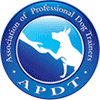Normal cognitive decline or something else?
It happens to all of us: as we age, our brains move a little slower, we take a little longer to solve problems, and it takes a little more effort to absorb new information. It’s not that intelligence or problem solving capacity has decreased at all, it’s just that things are a little slower. It’s a pretty clear pattern across all animal species.
But, did you know that studies indicate that dogs can suffer from cognitive dysfunction or dementia similar to that found in humans? Sometimes it’s not just “normal aging” – sometimes it’s a treatable medical problem. More severe than the normal slowing down of mental function, it’s called Canine Cognitive Dysfunction Syndrome and has similar (but not identical) pathology to human dementia. It is not at all similar in pathology to human Alzheimer’s disease, although it is often mistakenly called “Doggy Alzheimer’s.”
It’s not just dogs, we’re sure
It’s only a matter of time before other species of animal are found to suffer from dementia, as well. Dogs just tend to be the most convenient test subjects because their lives are so closely tied with humans.
Symptoms of Canine Cognitive Decline, or “doggy dementia”
Generally the first thing owners tend to notice is a dramatic breakdown of normal function that causes a bizarre change in your dog’s normal behavioral patterns, such as house soiling or getting lost in a once-familiar room.
Here is the basic “checklist,” although your veterinarian will be able to do a more thorough history and diagnosis. You want to watch for:
- Orientation: meaning your dog may get lost in a small or familiar area. He may suddenly begin going to the back door to potty, when for his entire life he’s gone to the front. Some dogs appear confused, and may not be able to find their food and water dishes, or unable to find their way out from under a chair.
- Social Interaction: Normally independent dogs may become strangely clingy. “Velcro” dogs may become distinctly aloof. Or even stranger, a normally affectionate dog will walk away in the middle of a petting, for no reason. Rarely, we’ve seen sweet dogs become aggressive or defensive, where no other cause can be determined.
- House training: dogs who have had perfect house training their entire lives may begin having “accidents.” These are truly accidents; they are not in any way an attempt by your dog to transmit any sort of communication. Rather, they likely reflect a breakdown of memory and learning.
- Sleep: circadian rhythms can be disrupted, resulting in a dog who appears to sleep more than is normal, or who becomes an insomniac.
Unfortunately, cognitive decline is as difficult to treat in dogs as it is in humans. Your veterinarian can prescribe a medication which will help through its immune-system boosting and anti- neurodegenerative effects (meaning, it slows the breakdown of the connections in the brain and helps to grow new ones). There is some evidence that diet rich in antioxidants can have a positive effect, as well. And of course, behavioral and psychological support goes a long way, too. The brain is incredibly malleable. Help your dog to do the canine version of a crossword puzzle every day to keep his mind sharp, by teaching him new tricks, playing hide and seek with his toys or treats, or giving him a food puzzle to solve.
If you need some help in adapting your home and lifestyle to your aging dog’s needs, contact us – we’d love to help!








